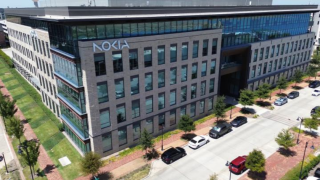What have been the highlights and key developments in the Middle East for France-IX in the past year?
The past year has seen some fantastic growth for France-IX. We opened a second PoP in Marseille, upgraded our chassis to allow 100Gbps ports and, just yesterday, we announced our 300th member, GulfSat Madagascar. With this addition we are continuing to expand our network beyond France and so strengthen our position as the leading digital gateway to the Middle East as well as Africa.
What makes the Middle East a strategically important market for France-IX?

We have a strong community already connected in Paris and we have also Marseille which acts as a gateway for Middle East, where a number of deep sea cables from the Middle East (and from all around the world) land - SEA-ME-WE 4 and AAE-1 among others (and soon to be joined by the news SEA-ME-WE 5 cable, which will add 24Tbps. It also means that Marseille is the preferred location for operators across the Middle East to connect to operators in Europe and beyond because it offers higher speed access to content than from other European locations.
We are not providing capacity on our own to interconnect Paris and Marseille, as they are two differentiated IXPs, and we consider it is not an IXP’s role to provide long-haul connectivity. However we are working on partnerships with operators to make sure a network can easily connect to both Paris and Marseille (bundle offer), or can connect in one city and also reach the other one through such operators, which will make it even easier for Middle Eastern operators to access content from our members. It is an exciting time.
What are your strategic priorities for the Middle East in 2016 and what announcements can we expect from France-IX in the region this year?
We have a wish list of around 30 Middle Eastern operators that we would like to work with. Hopefully 2016 will see us make a number of news announcements that a good many of these have joined our community.
How has demand from service providers in the region evolved in recent years and how does France-IX aim to meet those demands this year?
Middle Eastern operator demand is very specific. They have been accessing content from CDNs for some time and now the new consumer demand is for gaming. This means there is a high expectation for gaming connectivity and so operators are interested in improving their access to online gaming providers. We aim to meet this demand by enabling our community of gaming peers in Paris, which is growing fast, to also connect at Marseille. This will then make them much more attractive to Middle Eastern service providers because access to gaming services and video streaming will be much faster for end users in the region.
What are the major trends in the Middle Eastern market and how is France-IX planning to capitalise on those?
As mentioned, the demand in the Middle Eastern market at the moment is for gaming so we are working towards improving the connection between our gaming members and Marseille and by extension the Middle Eastern operators. We are also working on connecting additional French eyeballs (networks that focus on provision of internet access to the end-user) in Marseille. In future, it will be interesting to see if the trend follows the European model of moving from a demand for CDN content, to gaming and then on to cloud. We would also, of course, love to see a growing trend for peering but from what we can see, they are not ready for either cloud or peering yet. However, as peering does develop, we might expect to see more interest in cloud services and requests to connect with the many cloud service provider members at France-IX.




